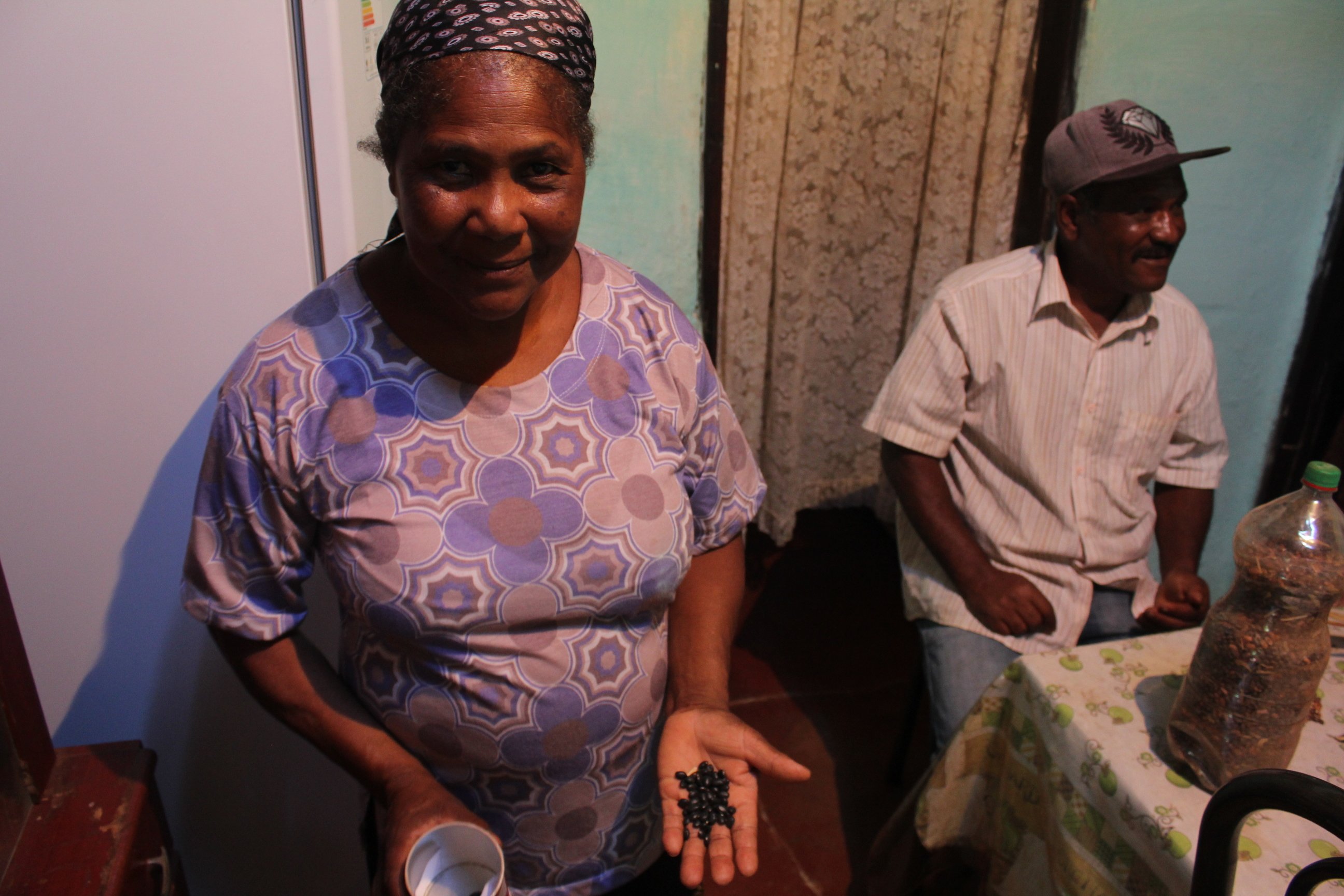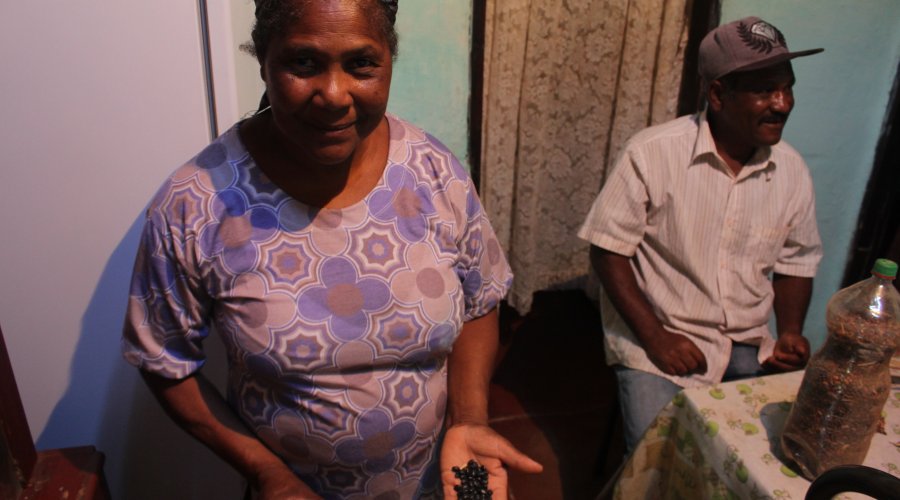The journey to Diamantina territory in January 2017 was an initiative that hadn't originally been planned in the project but flowed naturally and was carried out with the same intensity as in other communities visited by the Baobab Route. We left Casa de Cultura Tainã (Campinas - SP) on January 24 at 3 PM and drove straight to Diamantina with only two stops for rest and meals: the first at 6 PM in Carmo da Cachoeira, already in Minas Gerais state, and the second around 9:40 PM in Belo Horizonte, where we met our partner Maurílio—a programmer who gained his knowledge and contacts with free software at Tainã. Maurílio and his partner Ofélia (an astrologer) waited for us at their home with their 7-year-old daughter Lua. We arrived at their house at 3 AM after traveling 870 km (from Campinas to Diamantina).
The next morning (January 25), we spoke with Ofélia and Maurílio, who had already arranged to host us at the Federal University of Jequitinhonha and Mucuri Valleys, where Ofélia teaches Rural Education. In the afternoon, we went there, and she gave us her class time to present and talk with the students. The dialogue was interesting because the Baobab Route and Mocambos Network also think about and organize actions involving agroecology, heirloom seed exchange, and the appropriation and recording of information needed for cultivating and preserving our seeds and memories.
Most students in that classroom were Quilombola women, making our contact even more connective and symbolic. We exchanged ideas, news about communities and their territories, telecenters, and presented the Baobáxia platform and some of the actions carried out by the Route in Quilombola communities so far. The students came from different Quilombos in the region—some closer to Diamantina, others farther away. We gave them baobab seeds to plant in their territories.
The university is only 5 km from our partners' house, which served as our base for rest and communication throughout the process.
On the morning of the 26th, we returned to the university but with another class, also studying Rural Education and mostly composed of Quilombola students from Minas Gerais. We began discussing the possibility of creating ongoing education hubs within the university to further empower youth in strengthening their communities—both in terms of digital technology appropriation and knowledge preservation and sharing, starting with recording community knowledge and exchanging digital techniques (e.g., maintaining telecenter machines that are unused in some communities). The conversation sparked ideas and questions that, if refined, could empower youth, communities, and even the university.
It was empowering to receive the blessing of a centenarian elder in a nearly 300-year-old house that has stood strong all these years, built from clay and countless lived stories. The children are as affectionate as the elders, welcoming us with warmth and attention. Sisters Ana Luiza and Luiza Silva, like other relatives, carry forward family knowledge—from traditional sweets to lunar wisdom and its relationship with the land.
We spent the afternoon talking, sharing stories, reflecting, and exploring the territory. A type of ant infestation was damaging crops, so we collected some to analyze with partners in Campinas and find a solution. Stories unfolded as the kids played in the yard with Lua, who also came along to meet people, hear stories, and visit places. Beyond long conversations, we took many photos of the community and projected them for everyone to see at night. We sang, played, showed the steel drum (tambor de aço), and had a profound exchange.
On January 28, we went to Quilombo do Baú, 94 km from Diamantina. There, Quilombolas work with honey production and embroidery. When we arrived at the community association, a meeting was being held, mediated by Mirts, daughter of Seu Ostáqueo (an Rural Education student who developed an irrigation system and whom we’d met at the university). After the meeting, we talked about the Mocambos Network and Baobáxia, which inevitably touch on structural issues for communities: free territories, communication, and freedom. The exchange of knowledge was remarkable. Later, Dona Vera and Sebastião showed us their home. Vera displayed her embroidery work and pillows stuffed with marcela grass (harvested in the Quilombo). We took one pillow back with us, and a 12-year-old Quilombola boy’s embroidered pillow stayed with Lua.
We walked to their house, talked more, and exchanged seeds. We took back two types of rice and corn seeds and left flour produced in Quilombo do Espinho. Vera loved its taste and was happy—years ago, she used to produce it too.

On January 29, Mariângela, a 20-year-old Quilombola student from the university, guided us to her community: Quilombo Vagem do Inhaí. From Diamantina, we traveled 56 km (mix of asphalt and dirt roads) and arrived at lunchtime. Her mother welcomed us with her children and a table full of food. The kids played with us warmly. After lunch, we traveled another 16 km to the Inhaí Association, where we had a deep conversation covering many topics. From there, we could see a gold mine in the distance—a site of past violence and labor injustices.
TC raised critical questions that made us reflect. The Quilombolas of Vagem began connecting these provocations to their lived experiences, sharing observations like how elders rarely speak of the past, silencing their own history. Today, cultural manifestations in Vagem do Inhaí are infrequent. Most families practice Catholic or Evangelical faith, while talking about herbal healing or past healers (benzedeir@s) is uncommon. When we think of memory, we think of what strengthens us: our people’s wisdom. We respect all beliefs but also honor our ancestral cultural strength. We believe empowering traditions, communication, and ancestral technologies is the path to building a dignified nation. Seeds are key to our future. In Inhaí, we also exchanged seeds—taking rice and leaving flour.
The association serves as a meeting space for community gatherings, Catholic services, and—now—potential film screenings. We left them a projector for this purpose. In the evening, we returned to Mariângela’s family home to say goodbye to the children and arrived back in Diamantina at 11 PM.
On the 30th, we packed our materials, bid farewell to Ofélia, Maurílio, and Lua (who contributed so much to this process), and headed back to Campinas. On the way, we stopped in Bom Despacho (340 km from Diamantina) to reunite with longtime partner Mestre Jahça. As always, the reunion was powerful—it’s always good to reconnect with comrades in struggle. We left around 8 PM, made two rest stops, and arrived in Campinas by noon on the 31st.

